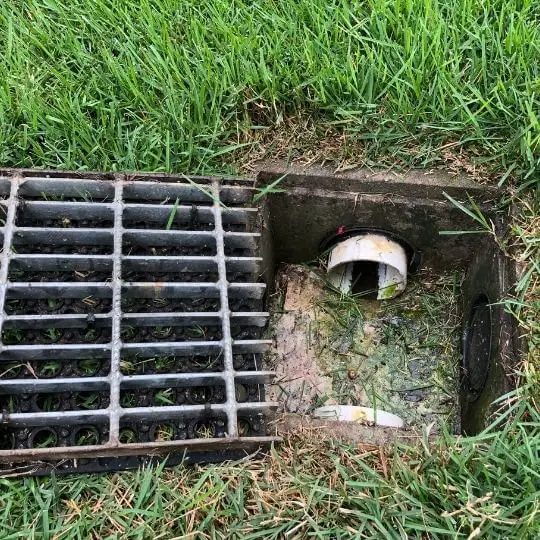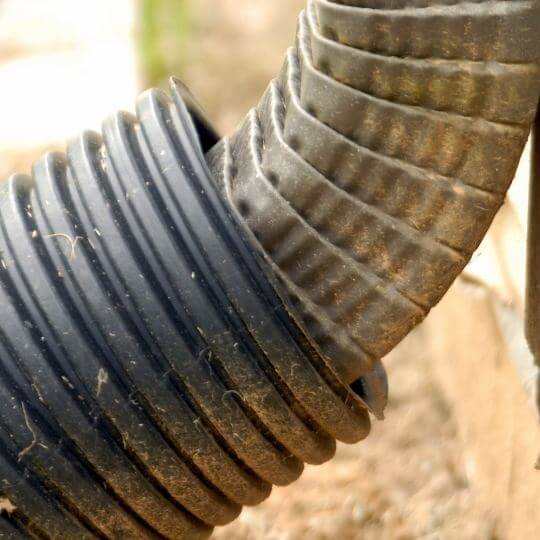Did u make some french drain mistakes recently? Or maybe you don’t even know what you did wrong?
Rainy days can be heavenly for your yard, but they can also be detrimental. If you have an area in your lawn that tends to remain almost permanently damp or you experience some level of flooding in your basement after a rainy day, keep reading, because installing a french drain might be the way to go for you.
Drainage, particularly, good, functioning drainage is necessary if you want to keep your home dry and your family members healthy. Water entering your home can cause the wood to rot and it creates the perfect environment for (potentially toxic or dangerous) mold to grow.
First, we are going to go over some of the basics regarding french drains – what they are, how they work, and so on. As well as what some of the common french drain mistakes are and how you can fix them.
What is a French Drain?

What a gutter does for your roof, a French drain does for your yard. Essentially, a French drain is a gravel-lined ditch with an embedded pipe that drains excess water. The French drain is ideal for managing water at ground level. Yards are rarely perfect, or better said perfectly leveled. This is why we tend to get those pesky spots that seem like they are permanently wet. You can easily solve this problem by rerouting the water with a French drain.
French drains can also solve the problem of water coming in through your foundation. [1]
What happens in this situation is that the water presses against the foundation of your home, slowly leaks through, and causes you to have a “wet” basement. If you install a French drain, the water can be rerouted; leaving you with a dry basement. If the water still persists, installing an indoor French drain might be the way to go for you.
Pipeless French drains also exist. As the name states, this drain doesn’t have a pipe and has more internal resistance to water. This means that it doesn’t evacuate as much surface water.
Why is it called a French Drain?
Believe it or not, but there is nothing French about the French drain. The name comes from the creator of the French drain, and his full name was Henry Flagg French. He was a big lover of agriculture and he knew that farmland can be horribly ruined with too much water. Introducing draining systems would improve the value of the land. He was also aware of unhealthy vapors that would be emitted from these wetlands.
After traveling through Europe, he published a book called “Farm Drainage”, where he described drainage techniques. He calculated the discharge volumes of pipes of various sizes and he recommended an excavated trench filled with gravel in which there would be a perforated pipe that would carry away any water accumulated. He called this a cellar drain, but we, today, know it as the French drain.
How Do French Drains Work?

Due to the fact that water always seeks out the lowest point in any landscape, the French drain needs to be installed at a low point within the affected area. If the whole installment isn’t done properly, you risk still getting water damage, etc. A French drain directs the water flow away from the water-infected area.
In order for it to work, the French drain needs to leverage gravity since it forces the water down from the surface, pulling it along the pipe that is sloping downwards. An appropriate discharge point is also highly important. Some suitable examples of areas to end your drainage pipe is a gravel pit, a dry well, the street, or a soakaway system. However, depending on your particular situation, another spot might be more appropriate.
To answer the question, “What is the best pipe to use for a french drain”, the ideal pipe to use would be a plastic pipe. Plastic is preferred as material here due to its durability. Usually, there are two variations: a corrugated pipe and PVC pipe. A corrugated pipe is flexible, while PVC is much stronger. No matter what the pipe is made of, it’s important that it’s perforated at regular intervals in order for the water to enter and flow through.
Due to the number of different components that a French drain needs, as well as the labor involved, the price of installing a French drain warries. You can find french drain calculators online that can help you come to a more accurate estimate. [2]
French drain mistakes – 6 Common Mistakes

Even though the installation process might sound like an easy task, there are things that can go wrong. Luckily, most of the mistakes are fixable if you know what to do. Let’s go over some of the most common mistakes that can occur to your French drain.
Using The Wrong Type of Drain Rock or Gravel
The whole point behind French drains is the drainage. This won’t be achieved if you use the wrong type of drain rock or gravel. Ideally, you would use a clean natural round stone since it allows good flow and will not clog the system. Avoid crushed rocks if possible since they tend to clog the system. If you can’t find any other rocks than crushed, make sure to get a sock wrapped drainpipe
Not Calling Before You Dig
Always call before you dig. Why? Well, because you could potentially end up with a lawsuit. [3]Better said, you could damage someone’s land or public area. Always check in with the local building or homeowner authority before you dig.
Choosing The Wrong Landscape Fabric
Choosing the right landscape fabric is essential for a functional and durable French drain. You can most commonly find two types of geotextile landscape fabric – non-woven and woven fabric. For water drainage, you need a material that will let water pass easily but also keeps unwanted particles from entering the drainage system. Non-woven fabric is the way you want to go for your French drain.
Wrong Slope
With a French drain, you want to avoid the pooling of water since it can create many issues and problems. Always check the angle of the slope, since you want to steer water away – not accumulate it. A good slope is a slope that is greater than 1%. This ensures that gravity will distribute the water along the drain, giving you the drainage that you need.
Skipping the Drainpipe
You probably wouldn’t believe how many people skip installing the drainpipe in their French drain. If you skip this step, your drainage system won’t be able to handle heavier rainfall. Include the drainpipe – don’t make the mistake that, sadly, a lot of homeowners tend to make.
Ideally, you want to get the water as far away from your home as possible. So, some homeowners make the mistake to point the holes sideways. There is logic to this since the homeowner wants to point the holes away from their home. However, this is a mistake and could lead to water damage. Make sure that the holes of the pipe are face down. This also keeps the water levels in the drain as low as possible.

Michael Davis is a heating & plumbing expert who currently works as independent contractor in SC. He also writes for Plumbertip.
For almost 10 years he worked on various plumbing tasks across South Carolina.



